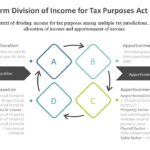Tax Authority
3 Sources of Authoritative Federal Tax Law are: Legislative law Administrative law Judicial law Legislative Law Legislative law, which comes from Congress is authorized by the constitution and consists of the Internal Revenue Code and Committee Reports. The Internal Revenue Code of 1986 is the primary source of Federal Tax Law. It imposes income, estate, […]
Continue reading→Tax Position
A taxpayer’s accuracy-related penalty due to disregard of rules and regulations, or substantial understatement of income tax, may be avoided if the return position is adequately disclosed and has a reasonable basis. Generally, the penalty is equal to 20% of the underpayment. Substantial understatement of income tax occurs when the understatement is more than the […]
Continue reading→Due Dates For Filing Income Tax Return
Original and Extended Due Dates of filing of return of income for a calendar year tax payer Return Type Original Due Date Extended Due Date S corporation March 15 September 15 Partnership March 15 September 15 Estate and trust April 15 September 30 Individual April 15 October 15 Exempt organization May 15 November 15 A […]
Continue reading→Foreign Tax Credit
A deduction is allowed for foreign income taxes paid or accrued during the taxable year. Alternatively, both individual taxpayers and corporations may claim a Foreign Tax Credit on income earned and subject to tax in a foreign country or U.S. possession. One may not claim both the deduction and the credit. The Foreign Tax […]
Continue reading→Estimated Taxes
Each quarterly estimated tax payment required is 25% of the lesser of 100% of the prior year’s tax, provided the tax liability existed and preceding tax year was 12 months (not for corporations with taxable income ≥ $1 million), 100% of the current year’s tax, or 100% of the annualized income (for corporations with […]
Continue reading→PERSONAL HOLDING COMPANY (PHC) TAX
The PHC tax is a 20% penalty tax imposed on the undistributed income of a corporation that meets the following two tests. Stock ownership test More than 50% by value is owned by 5 or fewer shareholders at any time during the last half of the year. Nature of income test 60% or more of […]
Continue reading→ACCUMULATED EARNINGS TAX
The accumulated earnings tax (AET) is imposed only on a corporation that, for the purpose of avoiding income tax at the shareholder level, allows earnings and profits to accumulate instead of being distributed. The accumulated earnings tax is imposed by Sec. 531 on unreasonably large accumulations of earnings in a corporation.. Without showing a […]
Continue reading→Business Nexus for Sales Tax
For a taxing authorities to tax sales and income-generating activities, nexus is required to be established of a physical and/or financial presence within a jurisdiction. Here are the 5 drivers in establishing the nexus … A physical location in the state Resident employees working in the state Real or intangible property (owned or rented) within […]
Continue reading→The Uniform Division of Income for Tax Purposes Act (UDITPA)
Before a state can tax a non resident, a minimum presence in the taxing state by the non resident must be established. In the context of Uniform Division of Income for Tax Purposes, income is distributed among multiple tax jurisdictions by allocation of income and apportionment of income. In the context of dividing income for […]
Continue reading→Exempt Organizations in US
1 EXEMPT STATUS Exempt status generally depends on the nature and purpose of an organization. An organization is tax-exempt only if it is a class specifically described by the IRC as one on which exemption is conferred. An organization operated for the primary purpose of carrying on a trade or business for profit is generally […]
Continue reading→








